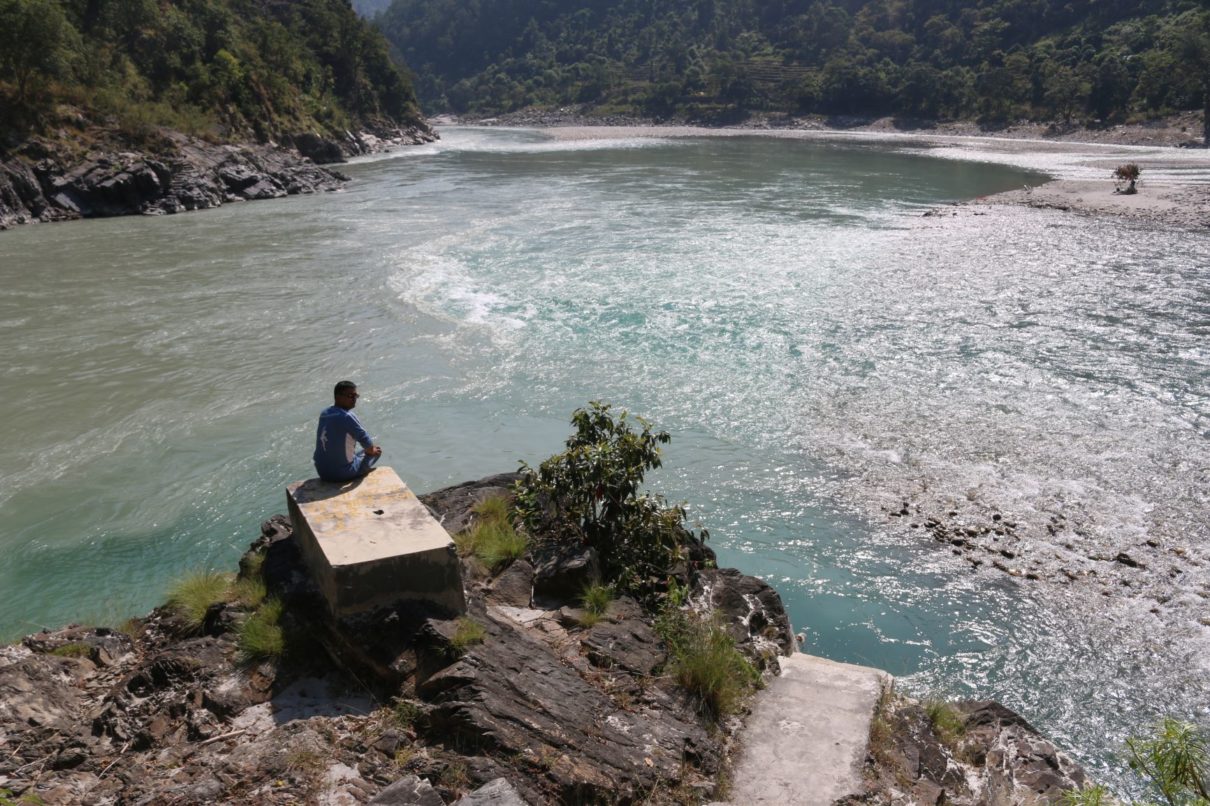“They turned out to be two baby roaches,” says Gautam. “I was disgusted.”
Still, Gautam was considerate enough not to make a fuss about the incident and ask for another one. But to her dismay and disgust, it happened again. She felt the same sensation in her mouth.
“There were more of them drowning in my drink.”
One of her friends had ordered an Iced Mocha and she too found dead cockroaches in her drink. And this time, Gautam and her friends voiced their complaint to the restaurant staff.
“Not only were the Chicken Station staff unapologetic,” says Gautam, “they had the audacity to charge us for the roach-infested drinks.”
One of the restaurant staff members told Gautam and her friends that the cockroaches might have crawled into the chocolate powder container that they kept open for the sake of convenience.
But when ApEx inquired with Dilip Kutu, the restaurant manager, about the incident, he said that they never keep their recipe containers uncovered. He went on to claim that the sealed chocolate powder box had those insects, which is why they have stopped buying from the concerned supplier.
Gautam and her friends walked out without paying the Rs 1,300 bill.
“This incident speaks volumes about customer service and health standards in Nepal’s food and restaurant industry,” she says.
I have myself been through situations where I had to question the food served to me at restaurants.
When I ordered a freshly made watermelon juice at Samsara Garden, a restaurant in Baluwatar, on Aug 13, what I got was a sour, fetid liquid. It was a hot day, so I blamed the state of my drink on the weather. But my next order of meatball spaghetti prepared with the cheese that had gone indelibly off convinced me that it was not the weather but the restaurant’s standards.
[caption id="attachment_29684" align="alignnone" width="1024"] Baby roaches found in Caffe Mocha (left) and Iced Mocha served by Chicken Station, Radhe Radhe, Bhaktapur | Photos: Nikki Gautam[/caption]
I was vindicated when I walked past the kitchen area on my way to the restroom.
To put it mildly, the smell of the bathroom was far more pleasant than fume emanating from the cooking area.
And only this past Saturday, I was served a stale doughnut, in a swanky-looking Khasti Bakery in Boudha. The same place had tried to ply me with foul-smelling momos a few months back.
A colleague of mine has had a similar off-putting experience. He was given a stale orange cake at Café Imago in Labim Mall, Lalitpur.
“We go to the so-called high-end restaurants and popular franchises expecting them to be good,” says Gautam. “But they do not care about their customers health.”
While every restaurant claims to offer fresh food, there are many cases where it is the exact opposite, especially when it comes to meat products.
Chef Saurav Thapaliya, owner of Cheese Square who had previously worked in a restaurant in Australia, says one cannot expect Nepali restaurants to serve fresh meat products.
“Most meat products in the poultry, cold stores, or butcher shops are kept in the open,” he says. “The same meat is bought by restaurants, kept in freezers for days and sold to the customers.”
There are high chances of bacterial growth in meat products when kept in open for long.
Raw meat products, Thapaliya says, can be used for up to two months if they are vacuum sealed and kept in a frozen state. “Otherwise, they cannot be used after two days, even when they are kept in a freezer.”
Similarly, fruits and vegetables need to be kept at a certain temperature to maintain their freshness.
When Thapaliya was working in Australia, he says, food items including meat and vegetables were kept frozen based on portion sizes, so that only the needed amount could be taken out of the freezer.
“The food will not be in a good condition if it is constantly being removed from a frozen environment,” he says. “I highly doubt restaurants in Nepal are applying this method.”
Krishna Dhamel, manager of The Burger House and Crunchy Fried Chicken, in Boudha, claims that they order fresh products every day after analyzing their daily sales.
“We keep our meat products in a deep fridge,” he says. “And in the case of cooked meat, we serve them the next day only if they are in good condition.”
He adds the restaurant tries its best not to keep leftovers.
But not all restaurants have the same set of rules, even though most claim to have strict food-quality standards.
Kumari Kharel, deputy secretary of Forum for Protection of Consumer Rights Nepal, says the government is not carrying out proper inspections to ensure the safety of food items in restaurants and bakeries.
Nepal still follows the Food Act that was first written in 1970 and last amended in 1998. “The government has not taken the matter of food security seriously,” says Kharel.
Of course, the government can invoke the Consumer Protection Act to ensure that restaurants serve only fresh and healthy food items.
“But the problem is with the Act’s implementation,” says Kharel.
If only the government took the Act’s provisions seriously and conducted regular inspections of hotels and restaurants, Kharel adds, public health issues resulting from eating unsafe food would automatically decrease.
“Our organization has constantly pushed the government to work on these issues, but to no avail.”
It is also incumbent on consumers to be aware of their rights and report to relevant authorities if they are served or sold food items that could potentially harm their health. But the larger onus, Kharel says, still lies on the government.
“Consumers can lodge a complaint with the police or their local governments,” she says. “But that will mean little if the government is not concerned about public safety.”
Baby roaches found in Caffe Mocha (left) and Iced Mocha served by Chicken Station, Radhe Radhe, Bhaktapur | Photos: Nikki Gautam[/caption]
I was vindicated when I walked past the kitchen area on my way to the restroom.
To put it mildly, the smell of the bathroom was far more pleasant than fume emanating from the cooking area.
And only this past Saturday, I was served a stale doughnut, in a swanky-looking Khasti Bakery in Boudha. The same place had tried to ply me with foul-smelling momos a few months back.
A colleague of mine has had a similar off-putting experience. He was given a stale orange cake at Café Imago in Labim Mall, Lalitpur.
“We go to the so-called high-end restaurants and popular franchises expecting them to be good,” says Gautam. “But they do not care about their customers health.”
While every restaurant claims to offer fresh food, there are many cases where it is the exact opposite, especially when it comes to meat products.
Chef Saurav Thapaliya, owner of Cheese Square who had previously worked in a restaurant in Australia, says one cannot expect Nepali restaurants to serve fresh meat products.
“Most meat products in the poultry, cold stores, or butcher shops are kept in the open,” he says. “The same meat is bought by restaurants, kept in freezers for days and sold to the customers.”
There are high chances of bacterial growth in meat products when kept in open for long.
Raw meat products, Thapaliya says, can be used for up to two months if they are vacuum sealed and kept in a frozen state. “Otherwise, they cannot be used after two days, even when they are kept in a freezer.”
Similarly, fruits and vegetables need to be kept at a certain temperature to maintain their freshness.
When Thapaliya was working in Australia, he says, food items including meat and vegetables were kept frozen based on portion sizes, so that only the needed amount could be taken out of the freezer.
“The food will not be in a good condition if it is constantly being removed from a frozen environment,” he says. “I highly doubt restaurants in Nepal are applying this method.”
Krishna Dhamel, manager of The Burger House and Crunchy Fried Chicken, in Boudha, claims that they order fresh products every day after analyzing their daily sales.
“We keep our meat products in a deep fridge,” he says. “And in the case of cooked meat, we serve them the next day only if they are in good condition.”
He adds the restaurant tries its best not to keep leftovers.
But not all restaurants have the same set of rules, even though most claim to have strict food-quality standards.
Kumari Kharel, deputy secretary of Forum for Protection of Consumer Rights Nepal, says the government is not carrying out proper inspections to ensure the safety of food items in restaurants and bakeries.
Nepal still follows the Food Act that was first written in 1970 and last amended in 1998. “The government has not taken the matter of food security seriously,” says Kharel.
Of course, the government can invoke the Consumer Protection Act to ensure that restaurants serve only fresh and healthy food items.
“But the problem is with the Act’s implementation,” says Kharel.
If only the government took the Act’s provisions seriously and conducted regular inspections of hotels and restaurants, Kharel adds, public health issues resulting from eating unsafe food would automatically decrease.
“Our organization has constantly pushed the government to work on these issues, but to no avail.”
It is also incumbent on consumers to be aware of their rights and report to relevant authorities if they are served or sold food items that could potentially harm their health. But the larger onus, Kharel says, still lies on the government.
“Consumers can lodge a complaint with the police or their local governments,” she says. “But that will mean little if the government is not concerned about public safety.”











